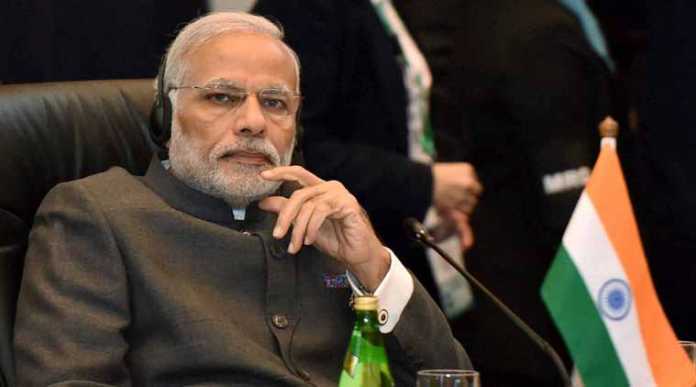By Prathamesh Mulye
“Demonetisation has made banks flush with funds, and they will lend it to productive sectors.” – Power Minister Piyush Goyal, November 26, 2016.
It won’t be quite as easy as Goyal said.
Rising non-performing assets (NPAs) and sluggish economic growth sparked a 60 per cent decline in corporate borrowing over the last six years, according to an IndiaSpend analysis of Reserve Bank of India (RBI) data, inhibiting the anticipated lending bonanza to companies from banks after demonetisation.
Now, after the government scrapped 86 per cent of India’s bank notes, by value, there are growing indicators of a further slowing.
Automobile companies are witnessing the sharpest fall in deliveries to dealers in 16 years, the Times of India reported; home sales have hit a six-year low, NDTV Profit reported; and bank credit to infrastructure companies declined steadily over the first eight months of 2016-17 and contracted 6.7 per cent in November, the Indian Express reported, quoting RBI data released on January 10, 2017.
So, the Rs 12.44 lakh crore ($182 billion) that has now returned to the banking system may be difficult to lend to the corporate sector.
“Deposits can be deployed only if interest rates are cut. Without reducing interest rates, demand won’t rise,” said Nilanjan Ghosh, economist of the Observer Research Foundation, a think tank. “The assumption is that demonetisation has led to higher deposits, resulting in larger cash reserves, allowing banks to advance loans and earn interest. This, in turn, will impact profits, strengthening the core capital of banks.”
“Demonetisation, apparently, has led to a swelling number of bank deposits, but even if there is a significant thrust from the government, it may take banks between nine to 12 months to deploy such funds profitably,” said R Maheshwaran, a former general manager with a public sector bank.
Merely reducing key rates won’t help, since banks will have to meet capital requirements before they start lending, said Vipin Malik, former director, central board of the RBI.
“Increasing deposits may help in the long term, but the banks will breach the capital trigger of March 2017 unless the government infuses capital,” said Malik. “The banks have breached sectoral limit of lending in terms of capital adequacy.”
Stating that a lot of unaccounted money has been lodged in banks, Finance Minister Arun Jaitley recently asserted that these deposits would increase the lending capacity of banks.
Why the decline in corporate loans
While the Centre banks on new deposits to revive lending, credit to the corporate sector (manufacturing and services) declined 60 per cent, from Rs 4.7 lakh crore to Rs 1.9 lakh crore over six years, according to RBI data.
Of the two sectors, net loans to the manufacturing sector, which accounts for almost 65 per cent of loans to corporates, declined 77 per cent from Rs 3.1 lakh crore at the end of March 31, 2011, to only Rs 72,454 crore at the end of March 31, 2016.
The worst hit were large-scale manufacturing units, which reported a drop of 69 per cent in borrowing over six years.
Loans to the services sector declined 46 per cent, from Rs 1.62 lakh crore on March 31, 2011, to Rs 87,689 crore on March 31, 2015. However, credit given to the sector increased marginally to Rs 1.1 lakh crore in March 2016 compared to the previous financial year.
Loans to the transport sector and non-banking financial companies declined more than 56 per cent over the six-year period.
Corporates owe close to Rs 42 lakh crore, or about 30 per cent of India’s gross domestic product, to banks as on March 31, 2016, according to RBI data.
While rising NPAs is one reason for the decline in corporate borrowings, declining demand due to an economic slowdown and the stagnation of existing industrial capacity has also contributed to the lending downturn.
“Risks to the banking sector remained elevated due to continuous deterioration in asset quality, low profitability and liquidity,” the RBI warned in a December 2016 report.
The NPAs of public- and private-sector banks were around Rs 6 lakh crore as of March 2016, Jaitley told the Lok Sabha.
“If NPAs rise, capital gets eroded, forcing banks to lend less,” said Anil Prabhu, general secretary of the Punjab National Bank Employees Union.
“A large chunk of NPAs of banks are from large enterprises. There is higher risk involved,” Ghosh said. “So, bankers might have taken a conscious decision to lend less to them.”
The growth rate of eight core industries (electricity, steel, refinery products, crude oil, coal, cement, natural gas and fertilisers) declined from 6.5 per cent in April 2012 to 2.8 per cent in April 2016, according to government data.
In July 2016, the government announced in the Lok Sabha that it is “continuously taking steps to boost growth in these industries”.
Even though most of the NPAs belong to large-scale industries, the impact on loan disbursals has been felt by small and medium enterprises (SMEs).
Bid to infuse capital will help banks
To help banks meet a minimum cushion of liquidity, the finance ministry in August 2015 said that PSBs would need Rs 180,000 crore ($26.8 billion) capital over the next four years.
The government has proposed the Indradhanush plan to infuse Rs 70,000 crore ($10.4 billion) in PSBs over the next four years, although banks will have to raise additional funds from the market.
“State banks are dependent on the government for capital but capital injection by the government is not sufficient to address capital needs,” said Vishwas Utagi, secretary of the All India Bank Employees Association (AIBEA). “With markets on the decline, the prospect of raising capital from the market looks weak.”
(In arrangement with IndiaSpend.org, a data-driven, non-profit, public interest journalism platform. Prathamesh Mulye is a New-Delhi-based reporter and a member of 101Reporters.com, a pan-India network of grassroots reporters. The views expressed are those of IndiaSpend. Feedback at [email protected])


